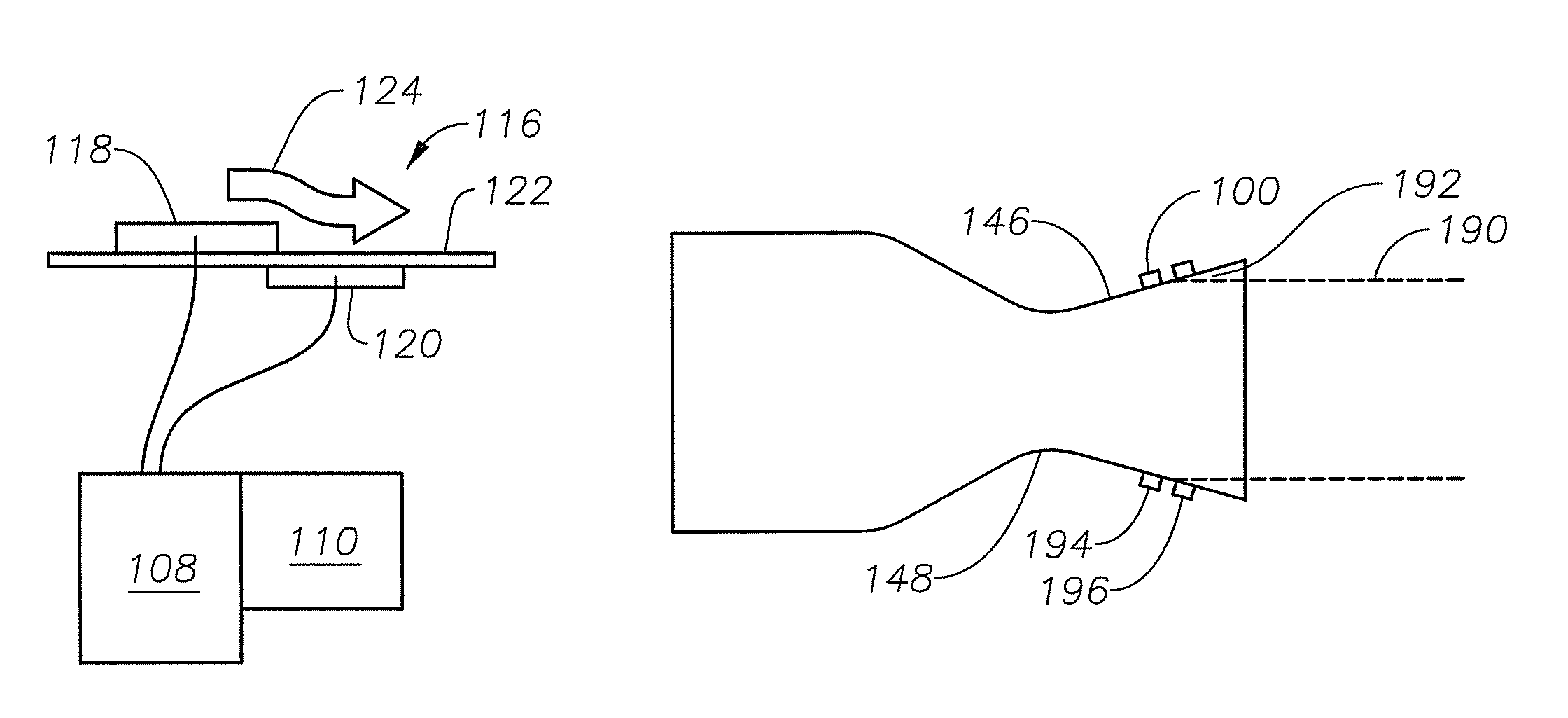Nozzle plasma flow control utilizing dielectric barrier discharge plasma actuators
a technology of dielectric barrier and actuator, which is applied in the direction of aircraft navigation control, vessel construction, marine propulsion, etc., can solve the problems of reducing engine performance penalty and cooling flow requirements, so as to reduce wall temperature and thermal gradient, improve nozzle thrust efficiency, and reduce acoustic effects
- Summary
- Abstract
- Description
- Claims
- Application Information
AI Technical Summary
Benefits of technology
Problems solved by technology
Method used
Image
Examples
Embodiment Construction
[0032]Referring to FIG. 1, solid state dielectric barrier discharge (“DBD”) plasma actuator 100 comprises surface electrode 102, dielectric barrier 104 and an electrode below the dielectric barrier, referred to as a buried electrode 106. In some embodiments, exposed electrodes 102 may be flush with dielectric barrier 104. In other embodiments, exposed electrodes 102 may protrude from dielectric barrier 104. An AC or pulsed power supply 108 is used to apply a voltage to the electrodes. A control module 110 may be used and may be a separate unit or it may be part of the power supply 108.
[0033]A jet of plasma is generated as ions move from surface electrode 102 toward buried electrode 106. These ions collide with neutral air molecules entraining additional flow. Two surface electrodes 102 may be located on either side of buried electrode 106. As the plasma flows from surface electrodes 102 toward buried electrode 106, the plasma jets may collide, causing plasma jet 112 to protrude norm...
PUM
 Login to View More
Login to View More Abstract
Description
Claims
Application Information
 Login to View More
Login to View More - R&D
- Intellectual Property
- Life Sciences
- Materials
- Tech Scout
- Unparalleled Data Quality
- Higher Quality Content
- 60% Fewer Hallucinations
Browse by: Latest US Patents, China's latest patents, Technical Efficacy Thesaurus, Application Domain, Technology Topic, Popular Technical Reports.
© 2025 PatSnap. All rights reserved.Legal|Privacy policy|Modern Slavery Act Transparency Statement|Sitemap|About US| Contact US: help@patsnap.com



